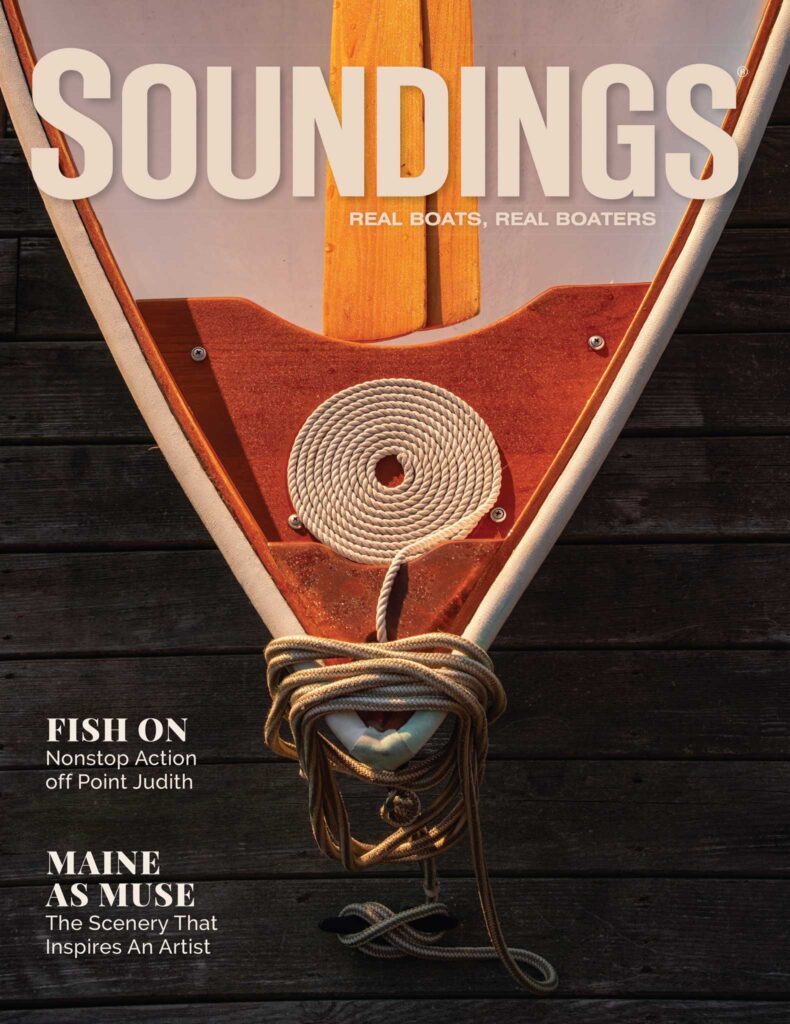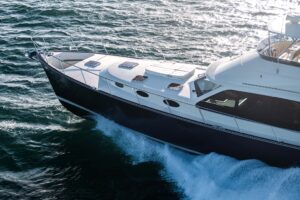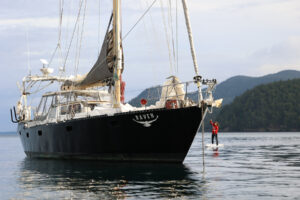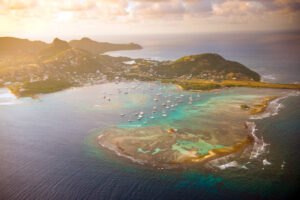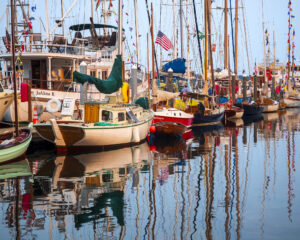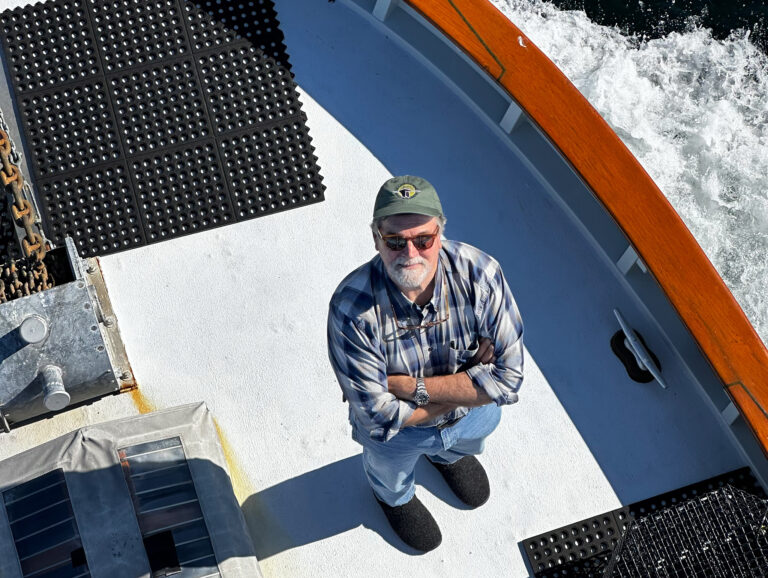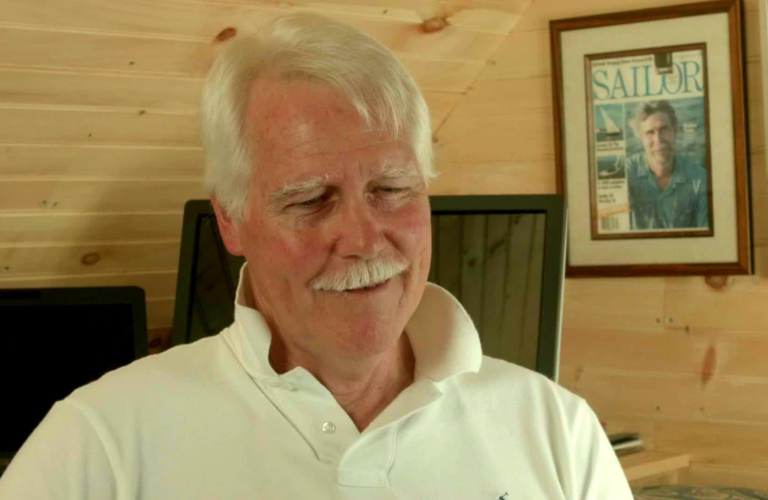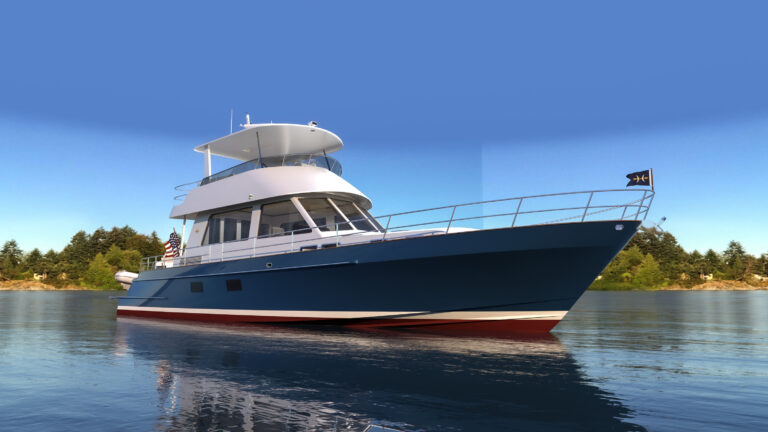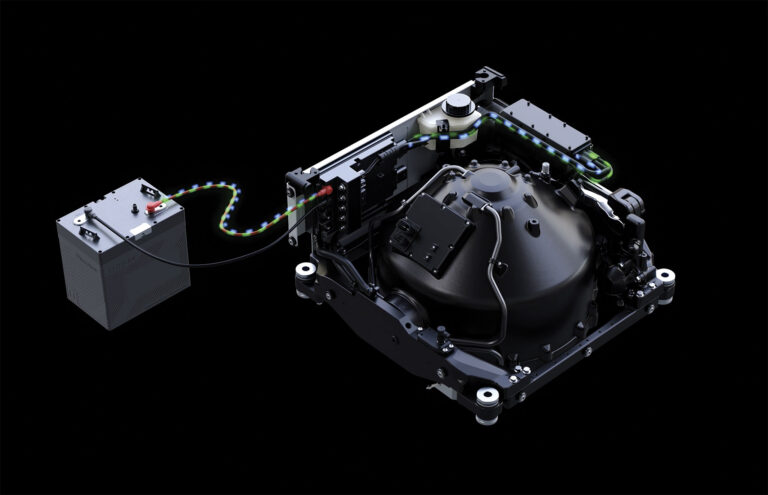My first visit to this sometimes overlooked part of the New England coast was as a young writer for a regional fishing magazine. I was invited to tag along on a day trip with a local striper fisherman who owned a house on Calef Avenue, barely a mile away from the Point Judith lighthouse. Perched on the bluffs overlooking Narragansett Bay, the view from his living room window was spectacular. We took a short drive down a back road to the port of Galilee, where his SeaCraft center console waited in a slip. That day, we caught live mackerel for bait at the mouth of the breachway, and ran around the tip of the point and up the beach, watching as waves broke on rocks as big as houses. When a huge striped bass inhaled my bait, it was the start of a one-sided fight that seemed to go on for hours but was more likely 20 minutes. I was helpless to slow the fish as line disappeared from my reel. When the fish made a quick turn around a boulder and broke our connection, I was just heartbroken, but a lesson had been learned: Never bring light tackle to a heavyweight bout.
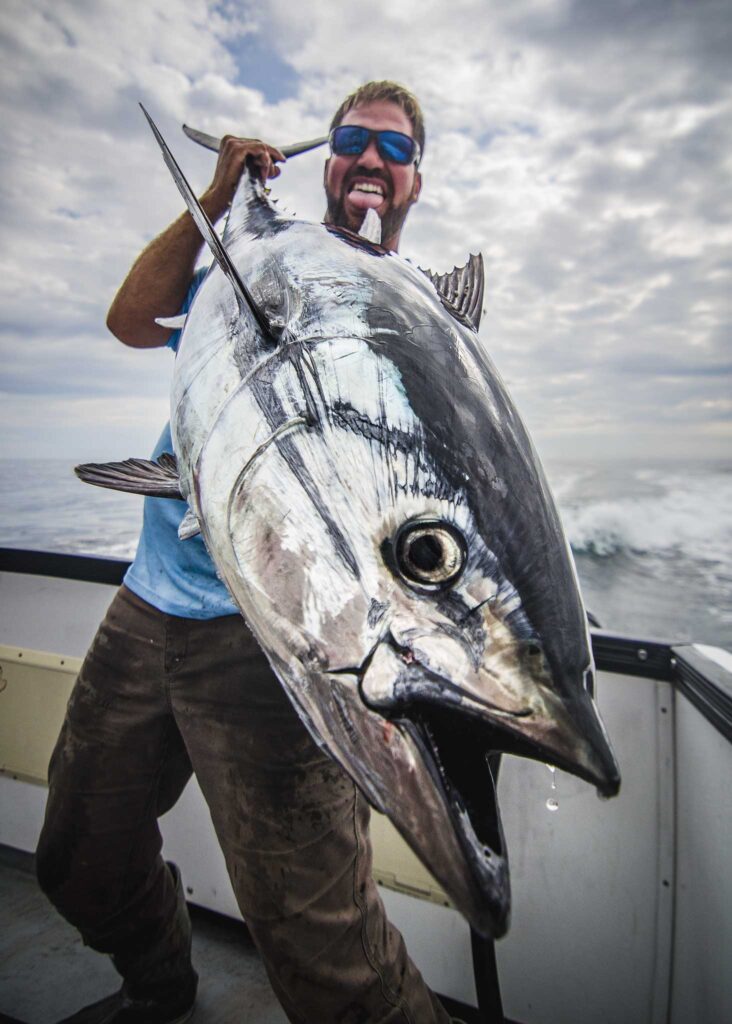
That experience lives on in my memory. Equally vivid are memories of the coastline along the bluffs, the waves breaking on the hook-shaped bar behind the point, and the majestic brown and white lighthouse that still stands at the promontory where Narragansett Bay meets Block Island Sound. On that first visit I discovered a place that I still consider to be one of the most beautiful locations in New England. It just happens to be a great fishing destination too.
There’s a variety of game and bottom fish here, from tautog and bluefin tuna to striped bass, sea bass, scup, cod, flounder, false albacore and bonito. There’s a substantial commercial fishery here. Galilee is the largest commercial fishing port in Rhode Island and has been a mainstay of the local economy for almost 150 years. It is the largest landing point and processor of squid in the country. According to Jason Jarvis, a deckhand with over two decades experience working on commercial and recreational for-hire fishing boats in the area, the one word that best describes Point Judith and this port is resilience.
“Through ups and downs in fish stocks, ever more restrictive regulations on all types of fishing, and a host of negative economic impacts, the Galilee fleet and the community has managed to keep fishing. That’s a testament to the strength of the people who live and work there,” says Jarvis.
The historical records for Point Judith date back to pre-revolutionary times, when a day beacon was initially placed where the lighthouse now stands. At that time, the area was inhabited by the Narragansett Indians. Today, the tribe’s reservation is located on the outskirts of nearby Charlestown and is home to the oldest pow-wow (350 years) in the U.S.
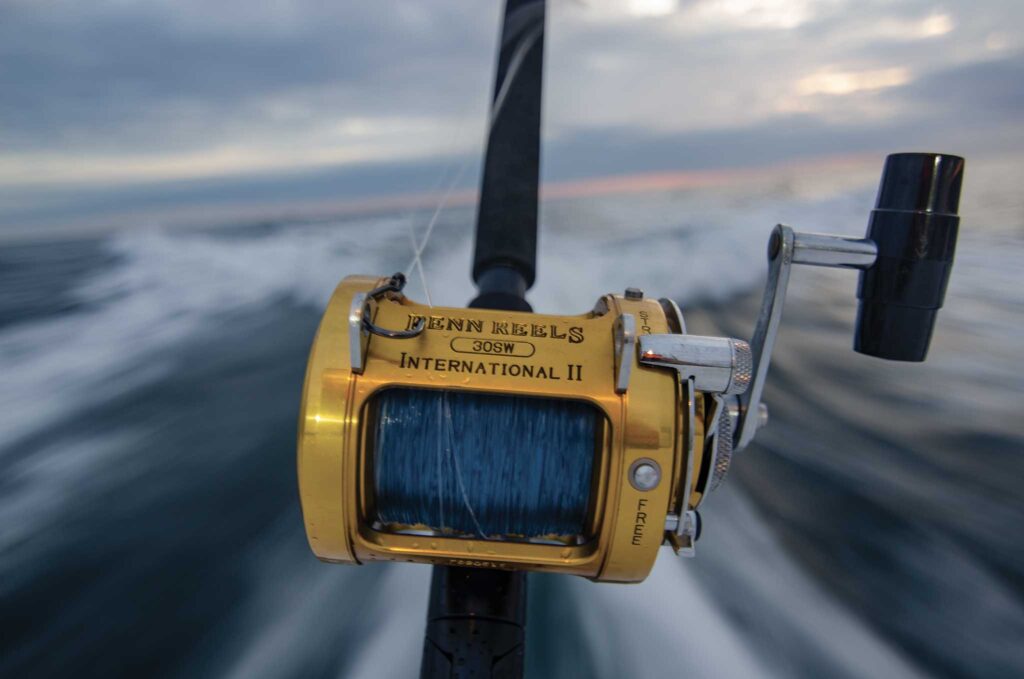
The first lighthouse on Point Judith was made of wood and erected in 1810, only to be destroyed by a hurricane in 1815. It was replaced the following year by a 35-foot stone lighthouse, but when 16 vessels wrecked near the point in 1855, that tower was replaced by the current 55-foot brownstone structure in 1857, along with a new house for the keeper. From the beginning, the light was a critical point of navigation for ships traveling between Boston and New York, along a coastline punctuated by rocks and reefs. The Narragansett Times reported on the astounding number of vessels that passed Point Judith from June 1, 1871, to June 1, 1872. Keeper Capt. Joseph Whaley counted 4,444 steamers, 2,183 sloops, 29,757 schooners, 728 brigs, 122 barks and 23 other ships, numbers that attested to the value of the light and its fog signal. During the summer of 2000, the lighthouse underwent major restoration and was automated, but it remains a significant aid to navigation and a magnet for visitors to the area, and that includes boaters.
In 1914, the Army Corp of Engineers began construction of a 3-mile-long rock breakwater west of the point to create the Point Judith Refuge, a safe anchorage for vessels. The area attracts sea life, plus fish for anglers to pursue. Passage through the refuge brings you to the entrance for Point Judith Pond and the Port of Galilee. This is home to the commercial fishing fleet, as well as shoreside packing and processing plants, a robust fleet of party and charter boats for recreational anglers, and a handful of famous boat-to-table restaurants that have been feeding locals and visitors for decades. Among them are Champlin’s Seafood, George’s of Galilee and the Lobster Guy, to name a few.
I learned early on that Pt. Judith is a great fishing destination. The salt ponds are often ripe with smaller striped bass that winter over in the area. I spent many evenings fishing them with a friend who has since passed, Tim Coleman. We fished a number of breachways bucktailing for bass and even caught the occasional codfish on the outgoing tides.
Anyone who has cast lines near Point Judith knows the striper fishing is outstanding. The reason: Migratory bass from the Chesapeake Bay and Hudson River inhabit the area from May through October. They come to feast on the abundant squid, herring, sand eels and menhaden, as do the other popular fish that anglers pursue.

The Point Judith area offers a range of sportfishing opportunities for anglers, regardless of the size and type of vessel they fish from. Here, you’ll find everything from trailer boats that ply shallow water to big convertibles armed to the gills for offshore adventures.
Since 1978, Captain Frank Blout’s renowned Francis Fleet has drawn anglers to this area from near and far. He started fishing aboard the original Gail Francis in 1967 when he was a kid and then became a deckhand in the early 1970s. In 1978, when he was 19, he got his captain’s license and bought the boat. Today, the Francis Fleet is made up of large party boats and smaller charter vessels ranging from the the 90-foot Gail Francis to the 46-foot walkaround Francis.
“The fishing has changed over the years,” says Blout. “It used to attract mostly hardcore cod fishermen. Today, there’s a much more diverse fishery and crowd of fishermen. We run trips for a variety of species, from nighttime striped bass to offshore tuna. Our 46-footer is even involved in research trips for the National Marine Fisheries Service. Another favorite for visitors is the whale watching trips we run throughout the summer.”
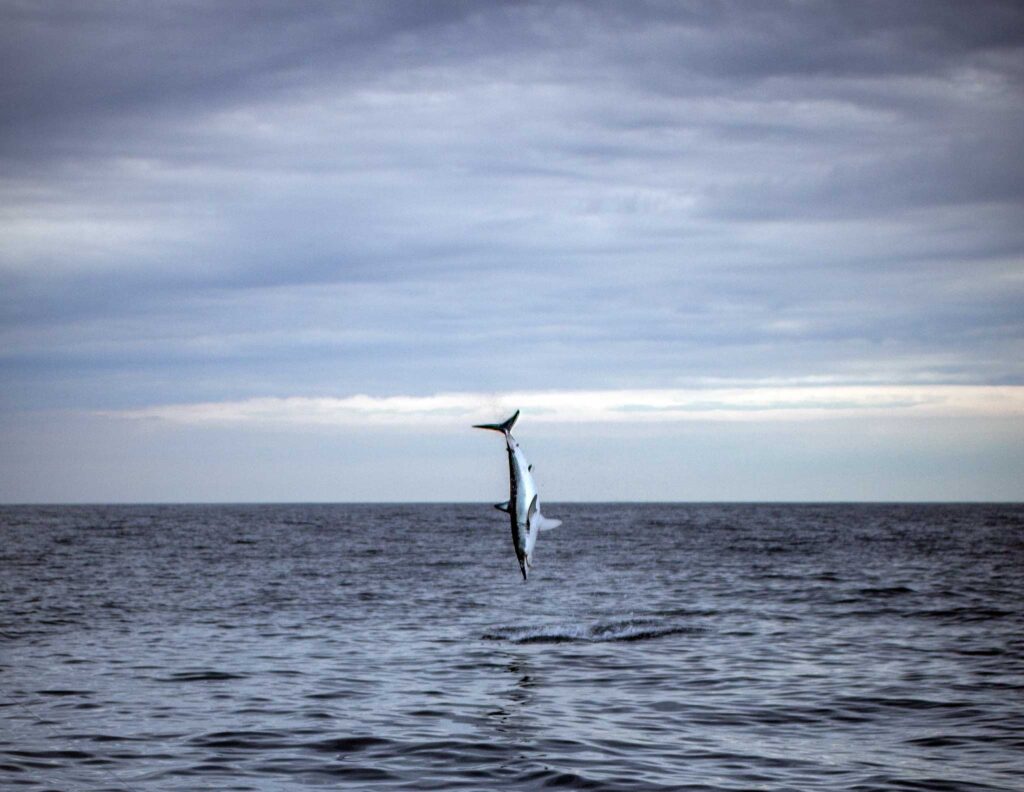
I first met Blout in the late 1980s when I was aboard the old Gail Francis on a tuna chunking trip. Even back then he was an incredibly knowledgeable captain and fisherman. I caught my first bluefin tuna that day, along with a 100-pound white marlin that would have been a line-class world record at the time. Frank said it remains the largest white marlin ever brought into Point Judith.
Capt. Andy Deangelo is another veteran fishing expert. He’s been running charter boats from Galilee for 52 years and is a highly regarded member of the sportfishing community. His current boat, a 41-foot Wesmac named Meridee, is one of about 30 charter boats that run out of various marinas and docks around Point Judith Pond. He is very familiar with all of the fish available here from spring into fall.
“We typically start off with a few weeks chasing codfish,” Deangelo says. “That fishery closes the end of May, but the striped bass heats up around the same time and runs through summer and well into the fall months. Fluke fishing kicks off in late spring and the season lasts throughout the summer. Black sea bass are all over the place, but you have to fight through the shorts to get a few keepers with the current 16.5-inch size limit. The past few years the tuna fishing has taken center stage, usually starting in early June with bluefin that can run up to and over 73 inches, the size at which they are classified as giants.”

More common are the fish from 50 to 100 pounds. Yellowfin tuna, typically caught in canyons, have been venturing closer to shore the past few years. “Whether you jump on a party boat, charter a boat like mine, or fish from your own, there are always fish to catch in our area,” says Deangelo.
Deangelo also owns the Meridee Bait and Tackle Shop on Point Judith Road, a place where crusty old-timers trade fish stories with the staff and, if your lucky, with visitors looking for the latest fishing scuttlebutt. Just don’t be in a rush and your patience will be rewarded when your questions are answered and you’re provided with the tackle and bait you need to get in on the best fishing.
Not everyone wants to fish from a charter boat near Point Judith. For those who want to trailer their own boats, there are several launch ramps in the area, including a state-owned ramp in Galilee.
If you are an avid striped bass fisherman, the cinder worm hatch that takes place on the May full moon in the backwaters of Point Judith Pond should not be missed. Capt. Mitch Chagnon has lived here for over 50 years and is a legend among the angling community, not just as a charter captain, but as a local angling expert. He told us a story about fishing the worm hatch with friends Mike Laptew, and Whitey and Lindell Coward.
“I had a 23-foot Mako center console at the time and over the years had learned to time the worm hatch well enough to be out on the ponds when the bass would be feasting,” he recounted. “We hit it just right on the new moon. Whitey and Lindell were using cinder worm flies at first and catching some fish but there were millions of worms all over the surface so I told them to switch to a green and white deceiver fly just so their offering stood out from the rest. In no time they were catching and releasing stripers as fast as they could bring them to the boat and unhook them. Mostly small fish but we caught bigger fish, too. One over 30-pounds. We were like kids in a candy store.”

Chagnon says the full and new moon phases in May and June are ideal, especially when there is a low tide in the afternoon, which kicks up the water temperature in the shallows. If you don’t flyfish, light spinning tackle works with small soft plastic baits with as little weight as you can cast. Green has been his go-to color. The hatch starts in the shallow well north of Galilee and moves south as the waters close to the inlet warm.
Outside the pond, anglers in small boats fish for fluke, sea bass and tog inside “the Refuge,” or outside the breakwater rocks and beyond. Later in the summer the breakwater attracts schools of Atlantic bonito and false albacore, which are incredibly fast and hard-fighting fish to catch on fly and light tackle.
When the weather is obliging, as it is most of the summer and early fall, fishermen in boats of all sizes regularly make the 7-mile run to Block Island, where trophy-size stripers and black sea bass are found in adundance.
Mitch loves fishing the North End and Southwest Ledge of the island with live eels for the big bass. He says you can catch knot heads (slang for big sea bass) there and on the East Grounds in deeper water.
“No bait is needed for them,” he says. “They will hit bucktails, and butterfly and diamond jigs just as well as a baited hook.”
For most of the season, anglers can catch stripers foraging around the rocks and up the beach from the lighthouse, from keeper-size to trophies. And you don’t need a big boat to do it. If you are lucky, you may even hook a monster bass like I did all those years ago. I only hope you have a better outcome than I did.
May 2025

